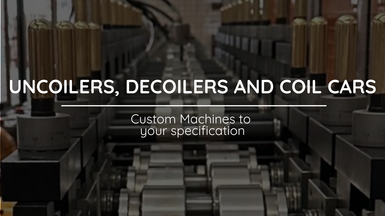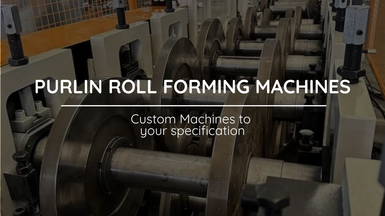
Metal Siding Trim
Here are some key aspects of metal siding trims
Posted on Tuesday, November 21, 2023
Metal siding trim is an essential component of a metal siding system used in construction and home improvement projects. It serves both functional and aesthetic purposes, helping to protect the edges and corners of metal siding panels while providing a finished and polished appearance to the overall siding installation. Here are some key aspects of metal siding trim:
- Protection: Metal siding trim helps protect the edges and corners of siding panels from damage caused by weather, moisture, impact, and other external factors. It prevents water infiltration, which can lead to rot and decay in the underlying structure.
- Aesthetics: Trim pieces are available in various profiles and styles, allowing you to customize the look of your siding installation. They provide a clean and finished appearance, concealing rough edges and transitions.
- Functionality: Trim pieces may also serve functional purposes, such as channeling water away from vulnerable areas or providing ventilation for moisture control. They can be used around windows, doors, corners, and other architectural features.
- Materials: Metal siding trim is typically made from the same materials as the siding itself, which can include steel, aluminum, or other metals. The choice of material depends on factors such as durability, cost, and design preferences.
- Profiles: There are various trim profiles available, including J-channel, F-channel, corner trim, and more. Each profile is designed for specific applications and can be used to achieve different aesthetic effects.
- Installation: Proper installation of metal siding trim is crucial to ensure its effectiveness. It often involves securing the trim pieces to the underlying structure and properly sealing joints and seams to prevent water infiltration.
- Maintenance: Like the siding itself, metal siding trim requires minimal maintenance. Periodic inspections and cleaning can help ensure its longevity and functionality.
- Color and Finish: Trim pieces can be painted or finished to match or complement the color of the siding. This allows for coordination with the overall design scheme of the building.
- Cost: The cost of metal siding trim can vary depending on the material, profile, and quantity needed for a specific project. It is important to consider both the upfront cost and the long-term benefits of protection and aesthetics.
In summary, metal siding trim plays a crucial role in both protecting and enhancing the appearance of metal siding installations. It is available in various profiles and materials to suit different applications and design preferences, making it a versatile component in construction and home improvement projects.
Metal Siding Trim Profiles
Metal siding trim profiles come in a variety of shapes and designs to suit different aesthetic preferences and functional needs in construction and home improvement projects. Here are some common metal siding trim profiles:
- J-Channel Trim: J-channel trim is a popular profile used to finish the edges around windows and doors, as well as to receive the cut edge of siding panels. It creates a clean, finished look and helps channel water away from vulnerable areas.
- F-Channel Trim: F-channel trim is similar to J-channel but is designed to hold the bottom edge of horizontal siding panels, such as soffit or fascia panels. It provides a secure mounting point while maintaining a sleek appearance.
- Inside Corner Trim: Inside corner trim is used at inside corners where two walls meet. It helps protect the edges of the siding and provides a smooth transition between the two walls. Inside corner trim is typically designed with a 90-degree bend.
- Outside Corner Trim: Outside corner trim is used at outside corners to protect the edges of the siding and create a polished appearance. It is designed with a 90-degree angle or may have a wider profile to cover corner seams.
- J-Trim: J-trim is a versatile profile that can be used in various applications, including as window and door trim, as well as for transitions between siding and other building materials. It typically features a J-shaped profile.
- Drip Edge Trim: Drip edge trim is used along the roofline to direct water away from the siding and prevent it from seeping behind the siding panels. It helps protect the building from water damage and can be crucial for roof and siding durability.
- Utility Trim: Utility trim serves functional purposes and is often used for utility access points or as a receiver for soffit or fascia panels. It may have a more straightforward and utilitarian design.
- Transition Trim: Transition trim is used to create smooth transitions between different siding materials or between siding and other building components. It ensures a clean and finished appearance at transition points.
- Reveal Trim: Reveal trim is designed to create shadow lines and add visual interest to the siding. It can be used to create a modern or architectural look by creating a recessed or raised section of siding.
- Cove Trim: Cove trim features a concave profile and is often used for decorative purposes. It can be employed to add a touch of elegance or architectural detail to a siding installation.
The choice of metal siding trim profile depends on the specific requirements of your project, including the type of siding material used, the architectural design, and the desired aesthetic. Properly selected and installed trim profiles contribute to the overall functionality and appearance of the siding system while protecting the building from moisture and other elements.
Roll Forming Machines LLC's New Factory
Posted on Sunday, March 23, 2025
We have relocated factories, which will be available for tours very soon.

Uncoiler, Decoiler and Coil Car Roll Forming Machine Accesories from Roll Forming Machines LLC
Posted on Sunday, November 24, 2024
Contact us today with your specifications for a custom Uncoiler, Decoiler or Coil Car at [email protected] or call us at (+1) (407) 859 1119

Stud and Track Roll Forming Machines from Roll Forming Machines LLC
Posted on Saturday, November 23, 2024
Contact us today with your specifications for a custom Stud and Track Machine at [email protected] or call us at (+1) (407) 859 1119

Cee and Zee Purlin Roll Forming Machines from Roll Forming Machines LLC
Posted on Saturday, November 23, 2024
Contact us today with your specifications for a custom Cee and Zee Purlin Machine at [email protected] or call us at (+1) (407) 859 1119